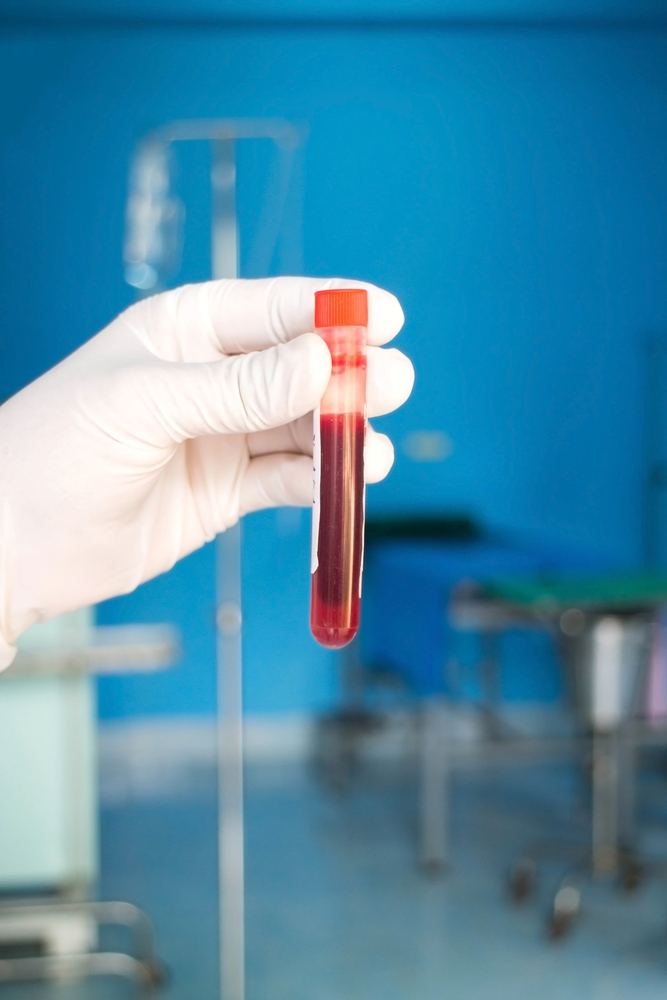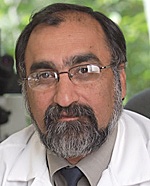Partnership Yields Alzheimer’s Diagnostic Breakthrough at 2 Canadian Universities

A collaboration between researchers at two universities in Halifax, Nova Scotia, in Canada has resulted in the discovery of an innovative, non-invasive diagnostic agent for Alzheimer’s disease, where before such a definitive diagnosis would have been possible only from a brain autopsy.
 However, new findings by research teams led by Dr. Ian Pottie, a professor of chemistry and physics at Mount Saint Vincent University, and Dr. Sultan Darvesh, who
However, new findings by research teams led by Dr. Ian Pottie, a professor of chemistry and physics at Mount Saint Vincent University, and Dr. Sultan Darvesh, who  holds the Dalhousie Medical Research Foundation Irene MacDonald Sobey Chair in Alzheimer’s Research at Dalhousie University, has yielded what the investigators describe as a breakthrough in Alzheimer’s diagnostics that has “never been done before. Never,” — a non-invasive diagnosis while patients are still alive and treatable. As Darvesh puts it in a MSVU release: “We have a solution.”
holds the Dalhousie Medical Research Foundation Irene MacDonald Sobey Chair in Alzheimer’s Research at Dalhousie University, has yielded what the investigators describe as a breakthrough in Alzheimer’s diagnostics that has “never been done before. Never,” — a non-invasive diagnosis while patients are still alive and treatable. As Darvesh puts it in a MSVU release: “We have a solution.”
 Darvesh, a professor in the Dalhousie University Department of Medicine (Neurology and Geriatric Medicine) and Medical Neuroscience, has invested 20 years of work on this project, the past 10 in partnership with Pottie, and with dozens of undergraduate and graduate science students at MSVU and Dalhousie who have participated over the years. Students have played a very important role in this work, Pottie said, noting that “students have been propelling this research for years, through summer and co-op work placements, honors theses, and classroom work.”
Darvesh, a professor in the Dalhousie University Department of Medicine (Neurology and Geriatric Medicine) and Medical Neuroscience, has invested 20 years of work on this project, the past 10 in partnership with Pottie, and with dozens of undergraduate and graduate science students at MSVU and Dalhousie who have participated over the years. Students have played a very important role in this work, Pottie said, noting that “students have been propelling this research for years, through summer and co-op work placements, honors theses, and classroom work.”
 A neurologist and chemist, Darvesh describes on a Dalhousie Medical Research Foundation web page his abiding intuition throughout that a key to unlocking the mystery of Alzheimer’s disease would be found in the brain chemistry of individuals who had died of the disease — a conviction that has sustained his dedication to the project when he could have given up five years ago “for many, many, many reasons.” With support from the Alzheimer Society of Nova Scotia, Dalhousie University, and Capital District Health Authority, Darvesh was instrumental in establishing the Maritime Brain Tissue Bank, a repository where donated brains could be stored and studied as to how brain tissues affected by Alzheimer’s disease differ from healthy brains and those of persons affected by other forms of dementia. “The Maritime Brain Tissue Bank is fundamental to our work,” he said, “to what we’ve learned so far, and to our search for a cure.”
A neurologist and chemist, Darvesh describes on a Dalhousie Medical Research Foundation web page his abiding intuition throughout that a key to unlocking the mystery of Alzheimer’s disease would be found in the brain chemistry of individuals who had died of the disease — a conviction that has sustained his dedication to the project when he could have given up five years ago “for many, many, many reasons.” With support from the Alzheimer Society of Nova Scotia, Dalhousie University, and Capital District Health Authority, Darvesh was instrumental in establishing the Maritime Brain Tissue Bank, a repository where donated brains could be stored and studied as to how brain tissues affected by Alzheimer’s disease differ from healthy brains and those of persons affected by other forms of dementia. “The Maritime Brain Tissue Bank is fundamental to our work,” he said, “to what we’ve learned so far, and to our search for a cure.”
 Pottie explains in a MSVU release that his lab is home to the synthesis, characterization, and biochemical investigations of the puzzle, after which resulting experimental compounds are put to the test at Dalhousie.
Pottie explains in a MSVU release that his lab is home to the synthesis, characterization, and biochemical investigations of the puzzle, after which resulting experimental compounds are put to the test at Dalhousie.
“We discovered that an enzyme called butyrylcholinesterase, or BChE, gathers around the plaques and tangles you find in Alzheimer brains,” Darvesh said. “When we found that it ignores similar plaques in normal brains, we realized we had discovered a unique marker of Alzheimer’s disease.” The key proved to be a small radioactive molecule, synthesized to bind to a protein associated with pathological dysfunction in Alzheimer’s-stricken brains.
From this discovery, Darvesh and Pottie and their research teams pioneered what they say is the world’s first technology for diagnosing Alzheimer’s disease in its early stages. The collaborators discovered a compound that binds with BChE in living brains and lights up in PET and SPECT scans to reveal presence of the disease. “Until now, the only way to positively identify Alzheimer’s disease has been to examine the patient’s brain after death,” Darvesh said. “Our new technology is a huge advance that opens the door to the possibility of stopping Alzheimer’s in its tracks.”
 With development and preliminary testing finally complete, the research team published its results in the Journal of Nuclear Medicine online last November, with the print edition released Feb. 1, 2016.
With development and preliminary testing finally complete, the research team published its results in the Journal of Nuclear Medicine online last November, with the print edition released Feb. 1, 2016.
The journal paper, “Synthesis and Preliminary Evaluation of Phenyl 4-123I-Iodophenylcarbamate for Visualization of Cholinesterases Associated with Alzheimer Disease Pathology,” (J Nucl Med Feb. 1, 2016 vol. 57 no. 2 297-302 doi: 10.2967/jnumed.115.162032) is coauthored by Drs. Darvesh (corresponding author) and Pottie, with R. Macdonald and G. Andrew Reid of Dal Medical Neuroscience, and Earl Martin of MSVU’s Department of Chemistry and Physics.
The researchers explain that in Alzheimer disease (AD), the brain chemicals Acetylcholinesterase and butyrylcholinesterase accumulate with brain-amyloid (A) plaques, noting that overall acetylcholinesterase activity is found to decline in AD, while butyrylcholinesterase has been found to either increase or remain constant.
They observe that while some cognitively normal older adults also have A plaques within their brains, cholinesterase-associated plaques are generally less abundant in such individuals. Consequently, they say brain imaging of cholinesterase activity associated with A plaques has potential for distinguishing brain activity of personal with AD from that of cognitively normal older adults, with or without (A) accumulation, during life.
The co-authors observe that current A imaging agents are not able to provide this distinction, so in order to address this unmet need, synthesis and evaluation of a cholinesterase-binding ligand, phenyl 4-123I-iodophenylcarbamate (123I-PIP), is described. In their experiments, Phenyl 4-iodophenylcarbamate was synthesized and evaluated for its binding potency toward acetylcholinesterase and butyrylcholinesterase using enzyme kinetic analysis, producing a compound subsequently rapidly radio-labeled with 123I and purified by high-performance liquid chromatography.
Autoradiographic analyses were performed with 123I-PIP using postmortem orbitofrontal cortex from cognitively normal and Alzheimer’s human brains, and comparisons made with an A imaging agent: 2-(4-dimethylaminophenyl)-6-123I-iodo-imidazo[1,2-a] pyridine (123I-IMPY), in adjacent brain sections. Tissues were also stained for A and cholinesterase activity to visualize A plaque load for comparison with radioligand uptake.
The investigators report that synthesized and purified PIP exhibited binding to cholinesterases, and with 123I successfully incorporated into this ligand, 123I-PIP autoradiography with human tissue revealed accumulation of radioactivity only in AD brain tissues in which A plaques had cholinesterase activity. 123I-IMPY accumulated in brain tissues with A plaques from both AD and cognitively normal individuals.
They conclude that radiolabeled ligands specific for cholinesterases have potential for use in neuroimaging AD plaques during life, and that the compound they describe in the paper — 123I-PIP — can detect cholinesterases associated with A plaques, thereby distinguishing Alzheimer’s brain tissues from those of cognitively normal older adults with A plaques, concluding that imaging cholinesterase activity associated with A plaques in living brains may contribute to definitive diagnosis of Alzheimer’s in live individuals.
The researchers say their next step will be refining the compound for human use, with their efforts now focused on preparation for commencement of clinical trials, and working to identify a compound, which Darvesh says will be named “the Halifax compound,” that will block BChE and prevent Alzheimer’s from taking hold, concluding: “Our new technology is a huge advance that opens the door to the possibility of stopping Alzheimer’s in its tracks.”
Unfortunately, the breakthrough diagnostic technique is expensive, with a single test of each radioactive compound costing upwards of $1,000 Canadian, and many tests will be required in order to refine agents for human imaging analysis, keeping the research team busy securing much needed funding for their development efforts. Their work has been supported by grants from the Canadian Institutes of Health Research, the Canada Foundation for Innovation, the Natural Sciences and Engineering Research Council, the Nova Scotia Research and Innovation Trust, the Dalhousie Medical Research Foundation, and the Mount Saint Vincent University Committee on Research and Publication.






